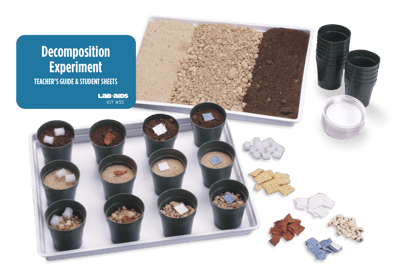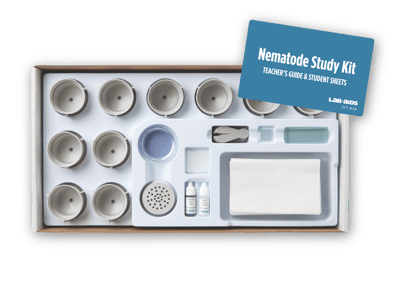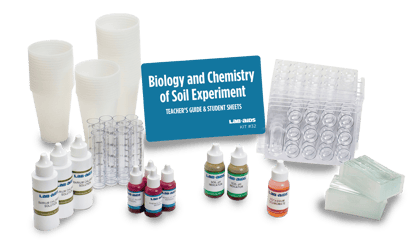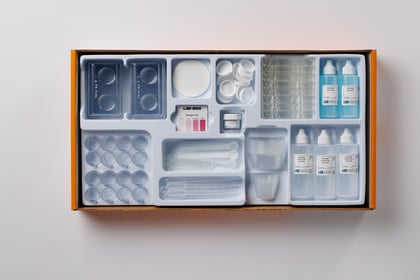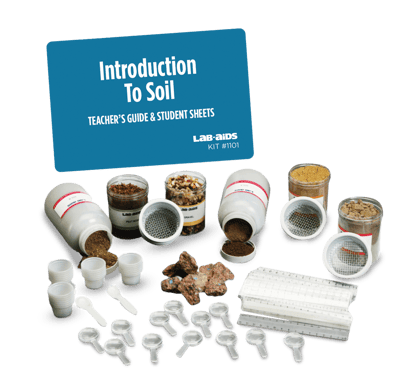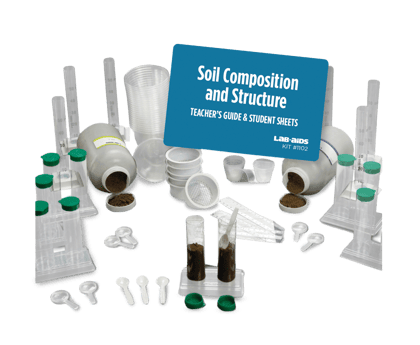Soil Organism Study
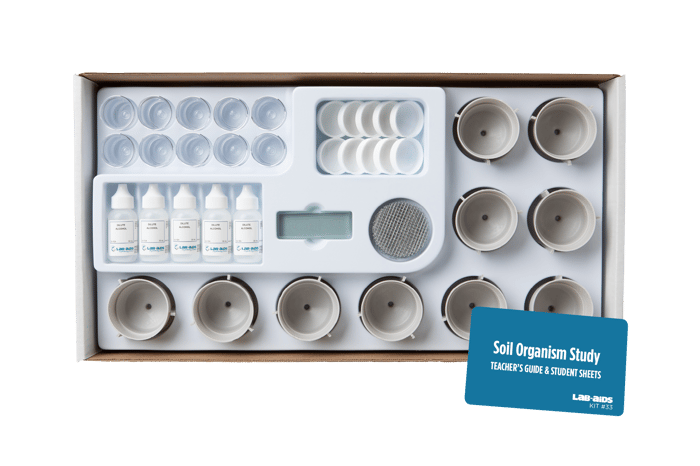
In this activity, students use a specially designed, reusable Lab-Aids Organism Extractor to isolate and collect organisms found in soil samples. A teaspoon of soil may contain billions of living organisms. Plant health, soil fertility, and soil development depend on these organisms in many ways. Soils contain organisms that perform activities such as decomposing organic matter, transforming nitrogen, building soil tilth, and producing antibiotics.
Details at a Glance
- 2 Days | 2 ~50 minute class periods
- 3 Activities
- Accommodates 2 classes, each with 10 groups of 4 students
- Consumables service 80 students
- Meets our criteria for supporting literacy
- Includes digital resources
Scientific Concepts
•Plant health, soil fertility, and soil development depend on organisms living in the soil.
•Different soli locations contain different types and population densities of organisms.
KEY VOCABULARY: organism density, soil, soil community
Guides & Student Sheets
Our kits and modules provide you with everything you need so you can open, review, and teach the material confidently the next day.
- Comprehensive Teacher Guide with background information, detailed instruction, example data and answers
- Student Sheets with age appropriate background information, full procedure(s), and analysis items
- Materials necessary for the investigation (beyond common classroom items)
- Safety Data Sheets
Kit Components
- 1 Teachers Guide with MSDS
- 20 Student Worksheets and Guides
- 10 Organism Extractor Collection Funnel
- 10 Organism Extractor Wire Mesh
- 10 Organism Extractor Tripod
- 10 Microscope slides
- 10 Vial with cap
- 5 Dilute alcohol, 30 mL bottles
- Cheesecloth
- Not included and needed for instruction: 10 (or more) cotton balls or batting, 10 (or more) plastic bags for soil samples, 10 (or more) rubber bands, 10 (or more) 6 oz tin cans (such as tomato paste) with ends removed (optional), 10 lamps (or sockets), each with a 25W incandescent bulb (optional), selection of microscopes and hand lenses.

